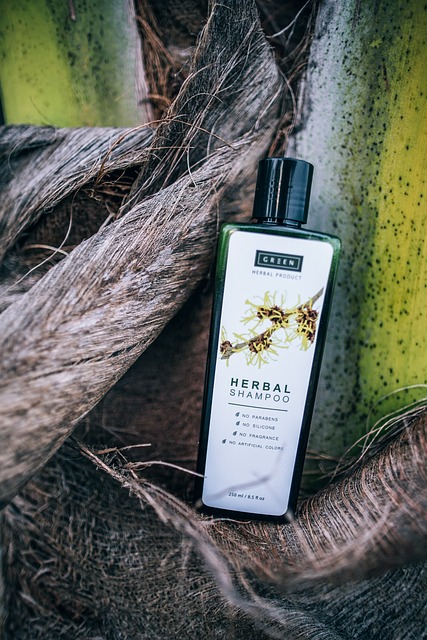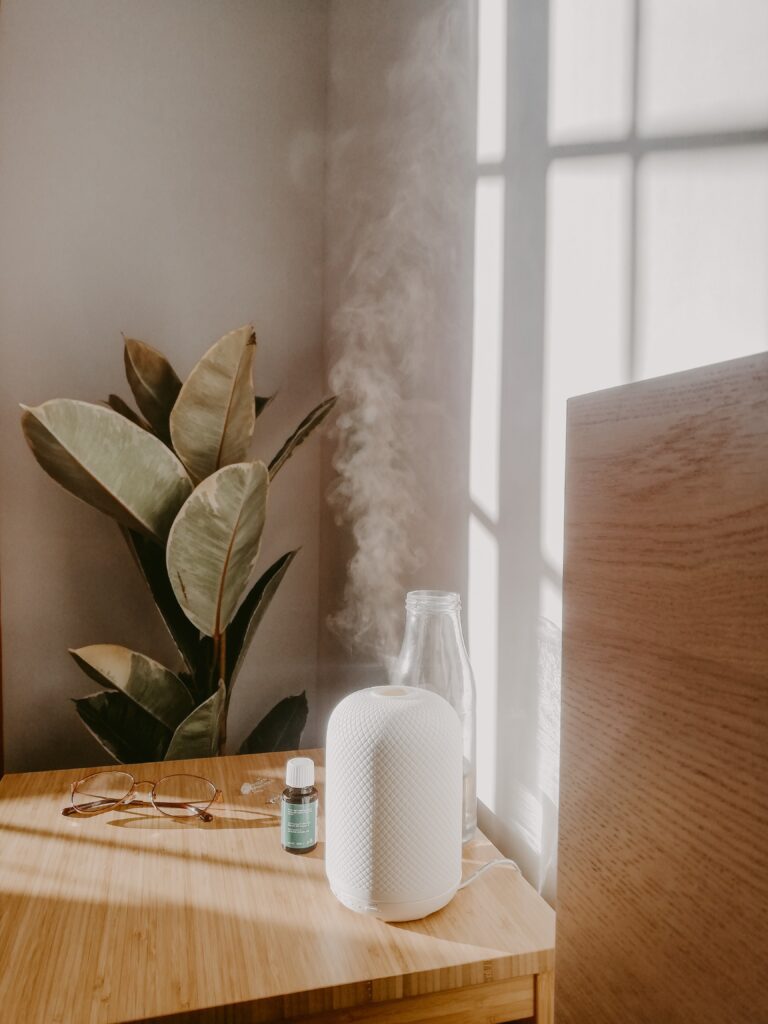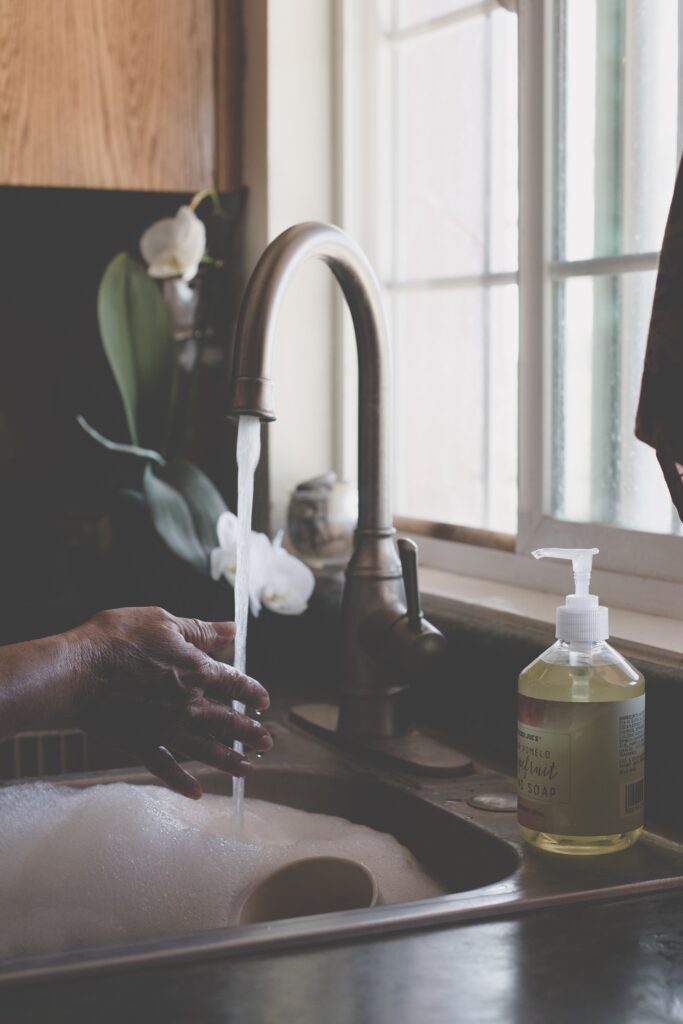Toxic ingredients in shampoo and conditioner are no news. I mean, do you know how many toxic chemicals are in the average home? Every time you stand in the shower with your bottle of shampoo or conditioner, you’re potentially pouring a slew of toxic chemicals that are directly hurting you and your hair’s health.
In this article, we’re stopping to talk about personal health. From lip balms to shampoos, your self-care products might not be as sustainable or healthy as you’d think. So, I’ll guide you through deciphering ingredient labels, recognizing red flags, and understanding the significance of opting for clean, natural alternatives
Let’s check out toxic ingredients in shampoos and conditioners in order to reduce toxic chemicals around you and your loved ones.
10 toxic ingredients in shampoo and conditioner
Unfortunately, most hair care products out there are just elixirs of undesirable chemicals that prioritize the profits of the company over you. And a range of those chemicals on the back of your shampoo bottle are toxic to your body, environment, and surroundings.
To help you determine which toxic ingredients in shampoo and conditioner you need to avoid, we’ve got a list of 10 toxic ingredients. All these ingredients not only damage your hair’s health but also impact the environment as you wash them into the sewage system or environment.
Sulfates
Sulfates, specifically sodium lauryl sulfate (SLS) and sodium laureth sulfate (SLES), are commonly used toxic ingredients in shampoo and conditioner due to their foaming and cleansing properties. Yet, there is growing concern about the true impact of sulfates.
When it comes to our hair, sulfates have a harsh cleansing effect that can strip away natural oils, leaving the hair dry, brittle, and prone to breakage.
These chemicals disrupt the delicate balance of moisture and sebum on the scalp, leading to an impaired protective barrier. Consequently, the scalp may become excessively dry, irritated, and itchy, potentially triggering conditions such as dandruff or eczema.
The latest research suggests that sulfates can induce skin irritation, inflammation, and even allergic reactions in susceptible individuals. The chemical is also proven to interact with the protein in your hair, resulting in lackluster, frizzy, and lifeless hair.

Parabens
Parabens are synthetic preservatives commonly used in shampoos and conditioners to prevent bacterial and fungal growth, prolonging the shelf life of these products. But with extended shelf life comes the scary toxicity of parabens for users.
According to FDA, parabens are bad news especially for women because they can mimic estrogen. Estrogen is one of the most critical hormones in the human body and is responsible for:
- Regulating the development and maintenance of female reproductive organs, including the uterus, fallopian tubes, and vagina.
- Contributing to bone health by aiding in the maintenance of bone density and preventing bone loss.
- Increasing high-density lipoprotein (HDL) cholesterol levels and decreasing low-density lipoprotein (LDL) cholesterol levels.
Playing a role in maintaining vaginal lubrication and elasticity. - Contributing to the maintenance of healthy skin, hair, and nails.
- Affecting mood and emotional well-being.
Supporting cognitive function and may play a role in memory and learning processes.
Helps regulate body temperature. - Playing a role in maintaining cardiovascular health by promoting healthy blood vessel function and reducing the risk of heart disease.
Now parabens have been found to disrupt the endocrine system, which can lead to hormonal imbalances and potentially contribute to the development of certain cancers, reproductive disorders, and other adverse health effects.
Parabens can easily penetrate the skin and have been detected in breast tumors, raising concerns about their potential role in breast cancer. While the evidence is still evolving, several studies have highlighted a correlation between paraben exposure and an increased risk of breast cancer.
Moreover, parabens have been linked to skin irritation, allergies, and sensitization, causing scalp and skin problems for individuals with sensitive skin.
Formaldehyde and formaldehyde-releasing agents
This one’s a top toxic chemical that EWG is working to raise awareness about. Formaldehyde and formaldehyde-releasing agents are toxic chemicals that can be found in some shampoos and conditioners.
These substances are used as preservatives to prevent the growth of bacteria and fungi in personal care products. So not only will you find it as one of the toxic chemicals in shampoo and conditioner but also in soaps!
Formaldehyde is a known human carcinogen and respiratory irritant. Prolonged exposure to formaldehyde has been linked to an increased risk of cancer, particularly in the nasal cavity and lungs.
It can also cause respiratory issues such as asthma, coughing, and throat irritation. In addition, formaldehyde is a potent skin sensitizer and can trigger allergic reactions, including dermatitis and hives.
Formaldehyde-releasing agents, such as DMDM hydantoin, diazolidinyl urea, and quaternium-15, are compounds that slowly release formaldehyde over time. These agents have similar toxic effects as formaldehyde itself, including skin irritation and allergic reactions.
Phthalates
Are you using any scented personal care products? If yes, you’re most likely interacting with phthalates, a known toxic chemical in shampoos and conditioners.
They are a group of chemical compounds used as plasticizers to increase the flexibility and durability of plastics. In personal care products, phthalates are commonly used as fragrance enhancers or as solvents for other ingredients.
Phthalates are known to be endocrine disruptors, meaning they can interfere with the normal functioning of hormones in the body.
Research has linked phthalate exposure to reproductive and developmental abnormalities, reduced fertility, hormone imbalances, and potential carcinogenic properties. These chemicals have been associated with adverse effects on the reproductive system, such as testicular toxicity and impaired sperm quality.
Exposure to phthalates can occur through inhalation, ingestion, or absorption through the skin. When using shampoos and conditioners containing phthalates, there is a risk of exposure through direct contact with the scalp and skin.
Polyethylene Glycol
Shampoos and conditioners are known for their thick, gel-like consistency. Hair products like shampoos and conditioners have a common ingredient named polyethylene glycol which gives it that consistency.
PEG is used as a thickening agent, emulsifier, and moisturizing ingredient in personal care products. While PEG is considered and proven safe for use, the concern comes from the fact that it’s often polluted with other harmful impurities.
Ethylene oxide and 1,4-dioxane often contaminate PEG during the manufacturing process. On one hand, ethylene oxide is a proven human carcinogen while 1,4-dioxane is classified as a possible human carcinogen.
As you scrub your shampoo on your scalp, these contaminants can enter through the scalp and pose health risks, including:
- Dried and irritated scalp,
- Increased risk of cancer,
- Frizzy hair with increased breakage,
- Allergic reactions.
So in the end, it’s often better to find shampoos that are labeled as “PEG-free.”
Alcohol
Everyone appreciates a drink once in a while. But when it’s in your shampoo or conditioner, it’s not as pleasant. Surprisingly, alcohol is a common ingredient found in many shampoos and conditioners. While it can serve various purposes, such as solubilizing ingredients and providing a lightweight texture, it can also have toxic effects on the hair and scalp.
One type of alcohol commonly used in hair care products is known as ethanol or ethyl alcohol. It has a drying effect and can strip the hair and scalp of natural oils, leading to dryness, frizz, and increased hair porosity.
Excessive use of alcohol-based products can cause scalp irritation, itching, and flakiness, especially for individuals with sensitive or dry skin.
Another type of alcohol used in hair care products is denatured alcohol or SD alcohol. This type of alcohol is primarily used as a solvent and can have even stronger drying effects than ethanol. It can disrupt the natural moisture balance of the scalp, resulting in dry and brittle hair
Synthetic Fragrances
Again, does your shampoo or conditioner have a certain flavor or scent to them? Perhaps you’re in love with how your hair smells like apples straight out of the shower. But what if I told you that you’re being exposed to toxic ingredients in shampoo and conditioner?
Synthetic fragrances are often composed of numerous undisclosed chemicals, including phthalates, which can be harmful. We already discussed how phthalates interfere with hormonal balance and have been linked to reproductive and developmental abnormalities. They can also trigger allergies and sensitivities, causing skin irritations and respiratory issues.
Furthermore, synthetic fragrances can contain volatile organic compounds (VOCs), such as benzene, toluene, and formaldehyde, which are known to have toxic effects. These VOCs can contribute to indoor air pollution and have been associated with respiratory problems, headaches, and irritation of the eyes, nose, and throat.
Better have an unscented product than consume one of the toxic ingredients in shampoo and conditioner.
Dimethicone
Almost every hair product out there has dimethicone in it. Dimethicone is a silicone-based ingredient commonly found in shampoos and conditioners. While it is widely used for its ability to provide a smooth and silky texture to hair, it’s proven to be one of the toxic ingredients in shampoo and conditioner.
Dimethicone forms a coating on the hair shaft, creating a barrier that prevents moisture and nutrients from penetrating the hair follicles. This can lead to dryness, dullness, and lack of vitality in the hair over time.
Moreover, dimethicone can contribute to product buildup on the scalp, potentially clogging the hair follicles and impeding the natural exfoliation process. This buildup can cause scalp irritation, and itching, and even contribute to dandruff or scalp acne.
Since dimethicone is not easily biodegradable, it also has negative environmental impacts when washed off and enters water systems.
Retinyl Palmitate
Now this one isn’t a very common ingredient found in shampoo and conditioner products, but is worth talking about. Retinyl Palmitate is primarily used in cosmetic products for its purported anti-aging properties. While Vitamin A itself is essential for the body, the safety of Retinyl Palmitate in leave-on products like shampoos and conditioners is questionable.
Exposure to retinyl palmitate, especially when combined with sunlight, can lead to the formation of free radicals. Free radicals can cause oxidative stress and potentially damage DNA, raising concerns about their potential role in the development of cancer and other adverse health effects.
Moreover, retinyl palmitate is a known skin irritant, particularly for individuals with sensitive skin. It can cause redness, dryness, and peeling of the scalp which can ultimately leave no hair on your head.
Triclosan
Triclosan is an antimicrobial agent that has been used in various personal care products, including shampoos and conditioners, for its ability to inhibit the growth of bacteria. However, there are concerns regarding its potential toxicity and negative impacts on both human health and the environment.
Triclosan is classified as a probable endocrine disruptor, meaning it can interfere with hormonal processes in the body. Studies have suggested that triclosan may disrupt the endocrine system, affecting hormone regulation and potentially leading to developmental and reproductive issues.
Moreover, triclosan has been found to contribute to the development of antibiotic resistance in bacteria, reducing the effectiveness of antibiotics in combating infections.
Triclosan can also have detrimental effects on aquatic ecosystems. When washed down the drain, it can persist in the environment and harm marine life, disrupting the balance of ecosystems.

Alternatives to toxic shampoos and conditioners
While shampoos and conditioners are the most common hair care products, there are many alternatives to toxic ingredients in shampoo and conditioner.
Here are some alternatives to consider if you’d like to steer clear of toxic chemicals:
- Co-washing: Co-washing, short for “conditioner-only washing,” involves using a conditioner to cleanse the hair instead of shampoo.
- Water-only washing: Water-only washing involves rinsing the hair thoroughly with water, and gently massaging the scalp to remove dirt and buildup.
- Natural Cleansers: There are natural alternatives to traditional shampoos, such as herbal or plant-based cleansers, which utilize ingredients like soapnuts, aloe vera, or herbal infusions to cleanse the hair without harsh chemicals.
- DIY Hair Rinses: Homemade rinses like apple cider vinegar or herbal tea rinses can help clarify the hair, balance the scalp’s pH, and add shine without the need for commercial shampoos.
- No-poo Method: The no-poo method involves avoiding traditional shampoos altogether and using homemade or natural alternatives like baking soda, diluted vinegar, or clay-based cleansers to wash the hair.
- Hair Oils and Serums: Using natural oils like coconut oil, argan oil, or jojoba oil can provide nourishment, moisture, and shine to the hair.
Interested to know more? Check out our detailed post on how you can ditch shampoos and conditioners like I did! And no, it’s actually not as bad as you might think.
Final Thoughts
Taking care of yourself is important if you’re a wellness fanatic like me. But that doesn’t mean you close your eyes to what you’re using in the name of self-care. Take the time to read the labels of your shampoos and conditioners to ensure they don’t include toxic chemicals that silently kill you and your hair’s health.
When it comes to understanding toxic ingredients in shampoo and conditioner, it’s time to read those labels and find out just how much damage you’re incurring with each shower.
So they are the main toxic ingredients in shampoo and conditioner we found. Please comment below with your thoughts.





